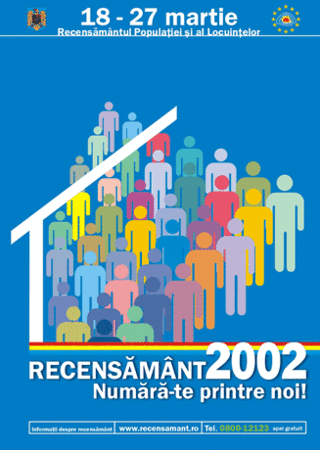Top Qs
Timeline
Chat
Perspective
Demographic history of Romania
From Wikipedia, the free encyclopedia
Remove ads
This article presents the demographic history of Romania through census results. See Demographics of Romania for a more detailed overview of the country's present-day demographics.
The 1930 census was the only one to cover Greater Romania. Censuses in 1948, 1956, 1966, 1977, 1992, 2002, and 2011 covered Romania's present-day territory,[1] as does the current 2022 census.
All but the 1948 census, which asked about mother tongue, had a question on ethnicity. Moldavia and Wallachia each held a census in 1859. The Romanian Old Kingdom conducted statistical estimates in 1884, 1889, and 1894, and held censuses in 1899 and 1912. Ion Antonescu's regime also held two: a general one in April 1941, and one for those with "Jewish blood" in May, 1942.
Remove ads
1859–1860 census
1887 estimate
December 1899 census

19 December 1912 census
29 December 1930 census

Remove ads
6 April 1941 census

25 January 1948 census

Remove ads
21 February 1956 census

Remove ads
15 March 1966 census
5 January 1977 census

Remove ads
7 January 1992 census


Remove ads
18 March 2002 census


- Ethnicity by county and number of inhabitants
- Ethnicity by county and percentage
20 October 2011 census


Ethnic figures for 2011 are given as a percentage of individuals for whom data is available, while the "data unavailable" cohort is given as a percentage of the total population.
1 December 2021 census
The 2021 Romanian census (RPL2021), with the reference day for the census data set at 1 December 2021,[17] was held between February and July 2022, being postponed from its original scheduled year due to the COVID-19 pandemic in Romania.[18] The first provisional results of the RPL2021 published at the end of 2022 show a resident population of Romania of 19,053,815 people.[17]
References
External links
Wikiwand - on
Seamless Wikipedia browsing. On steroids.
Remove ads

